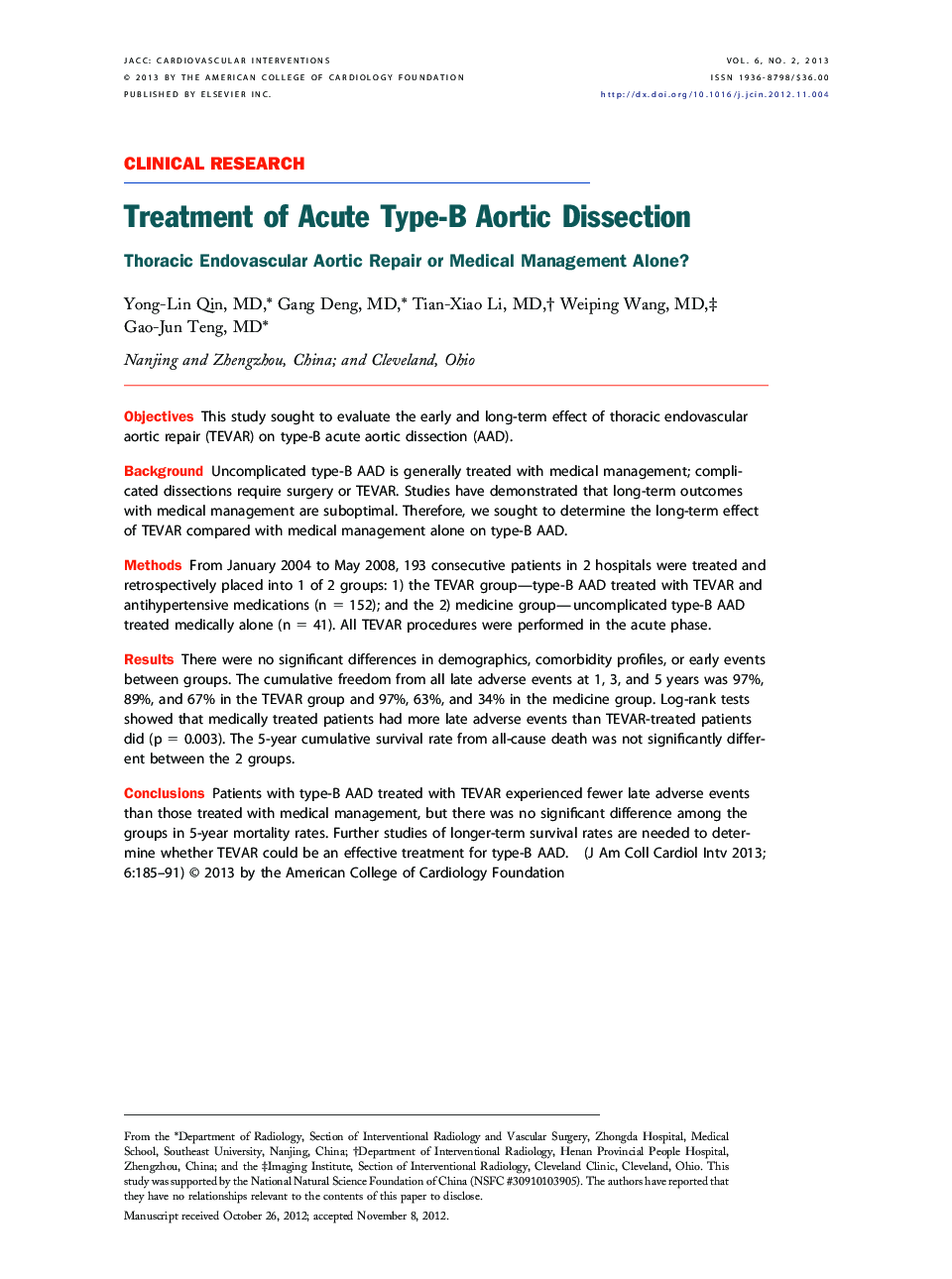| Article ID | Journal | Published Year | Pages | File Type |
|---|---|---|---|---|
| 2940518 | JACC: Cardiovascular Interventions | 2013 | 7 Pages |
ObjectivesThis study sought to evaluate the early and long-term effect of thoracic endovascular aortic repair (TEVAR) on type-B acute aortic dissection (AAD).BackgroundUncomplicated type-B AAD is generally treated with medical management; complicated dissections require surgery or TEVAR. Studies have demonstrated that long-term outcomes with medical management are suboptimal. Therefore, we sought to determine the long-term effect of TEVAR compared with medical management alone on type-B AAD.MethodsFrom January 2004 to May 2008, 193 consecutive patients in 2 hospitals were treated and retrospectively placed into 1 of 2 groups: 1) the TEVAR group—type-B AAD treated with TEVAR and antihypertensive medications (n = 152); and the 2) medicine group—uncomplicated type-B AAD treated medically alone (n = 41). All TEVAR procedures were performed in the acute phase.ResultsThere were no significant differences in demographics, comorbidity profiles, or early events between groups. The cumulative freedom from all late adverse events at 1, 3, and 5 years was 97%, 89%, and 67% in the TEVAR group and 97%, 63%, and 34% in the medicine group. Log-rank tests showed that medically treated patients had more late adverse events than TEVAR-treated patients did (p = 0.003). The 5-year cumulative survival rate from all-cause death was not significantly different between the 2 groups.ConclusionsPatients with type-B AAD treated with TEVAR experienced fewer late adverse events than those treated with medical management, but there was no significant difference among the groups in 5-year mortality rates. Further studies of longer-term survival rates are needed to determine whether TEVAR could be an effective treatment for type-B AAD.
